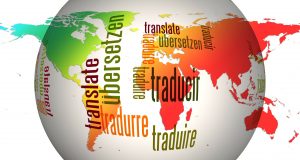Unilingual Anglophones in Canada often despair of their inability to speak French, but may not realize that a healthy portion of the words they commonly use in everyday parlance come from French. A text written in French would indeed be more intelligible to any hopelessly unilingual Anglophone than anything written in Old English.
This heavy influx of French into the English has nothing to do with the bilingual nature English/French of Canada, but can be sourced to the conquest of England by the Normans in 1066 and to the ensuing Norman rule of the British Isles for nearly 200 years during which Normandy (that part of France where the Normans came from) and England were united under one ruler. French became the language of the administration, of the nobility and of the courts. In addition, French enjoys a healthy presence in everything that has to do with home furnishing, food, fashion and luxury (surprised?).
So, what are the French words commonly used in English?
Let us start with politics: govern, parliament, administer, court are all French words.
- Monarchy: noble, duke, baron, subject, reign, royal
- Law: people, judge, jury, accuse, advocate, plea, acquit, exonerate. verdict, prison
- Economy: money, finance, revenue, profit, benefit, property.
- War: defense, battle, military, canon, offense, troop, peace, army, treaty
- Religion: saint, prayer, repent, miracle, preach, piety, confession, baptism, clergy
- Geography: mountain, plain, pole, equator, latitude, longitude, summit
- Home furnishing: table, lamp, paper, chair, mirror
While it will surprise nobody that English borrowed ample words from French for food, food deserves a paragraph by itself, for it denotes the social relationship that existed between the English peasantry (who spoke English) and the French cooks exercising their trade in high social circles.
There is an interesting coupling of English and French words when talking about animals depending on whether the animal is on the field or ready to be consumed.
So, the cow in the field becomes beef (French word) on our table. A pig becomes pork (French word), a calf becomes veal (French word) , sheep becomes mutton (French word).
To finish off with food, let us note that meals, namely dinner and supper come from French as well as good things that may ornament your table such is biscuit, salad and fruit.
A further blog will be devoted to another kind of pairing in which English has borrowed not one, but two French words to express the same meaning.
PS: Underlined words in this narrative are all French words. A sizeable proportion.



